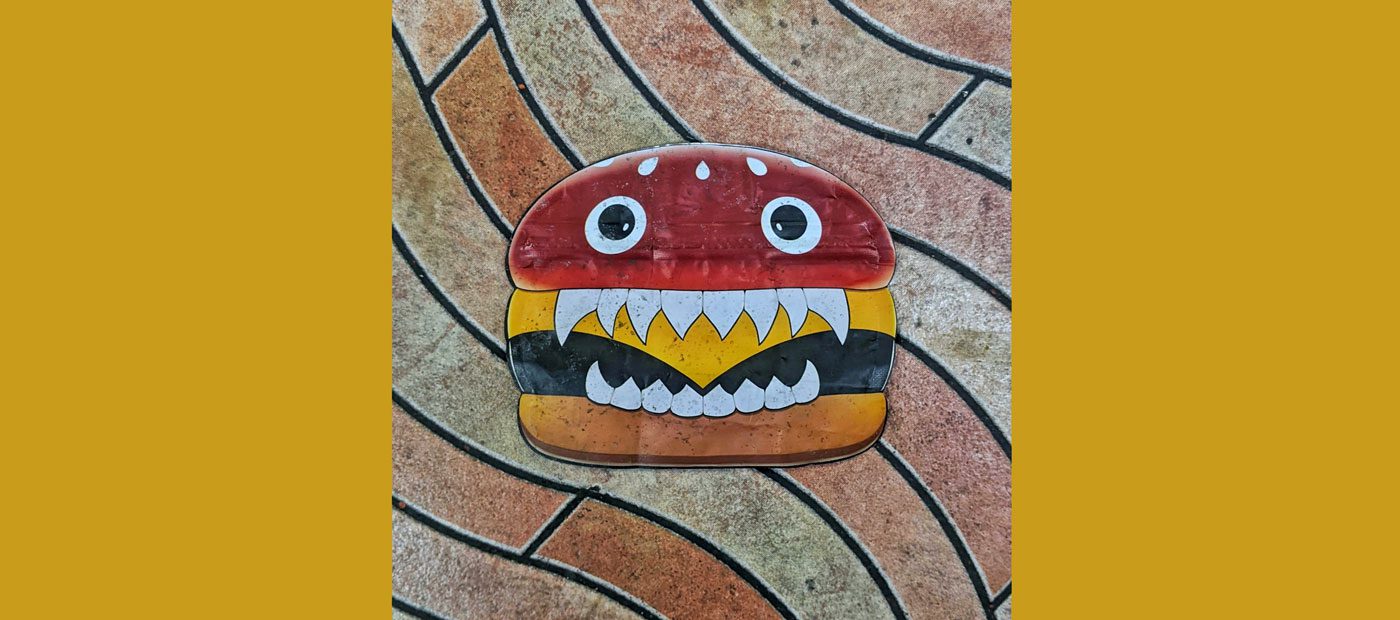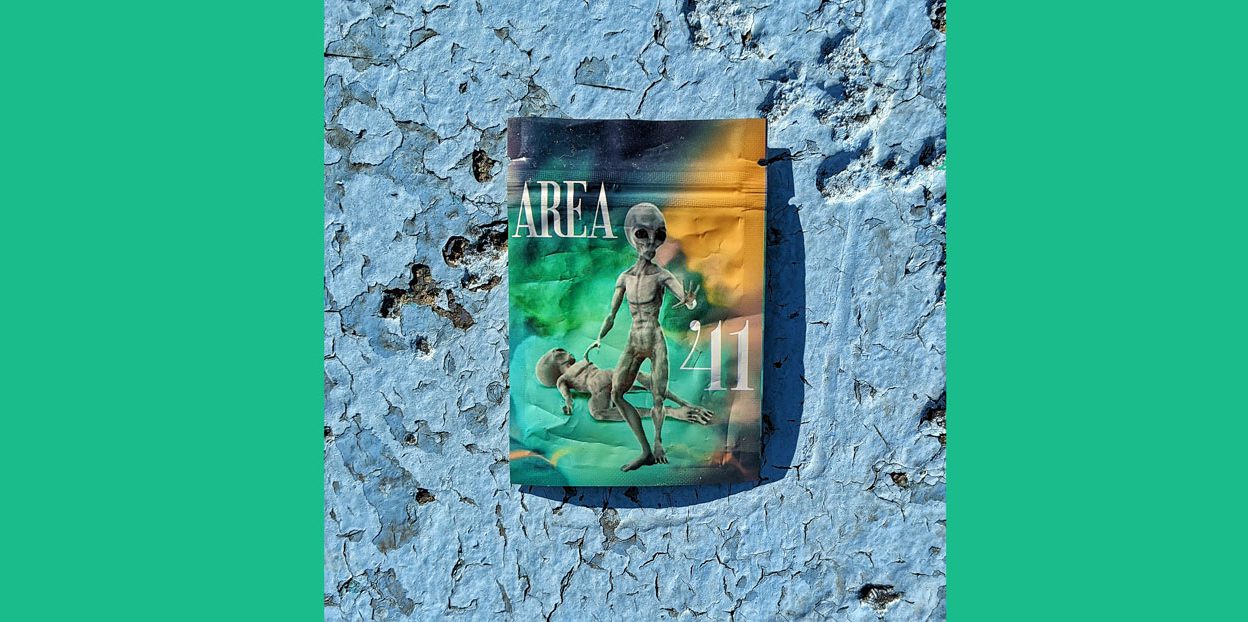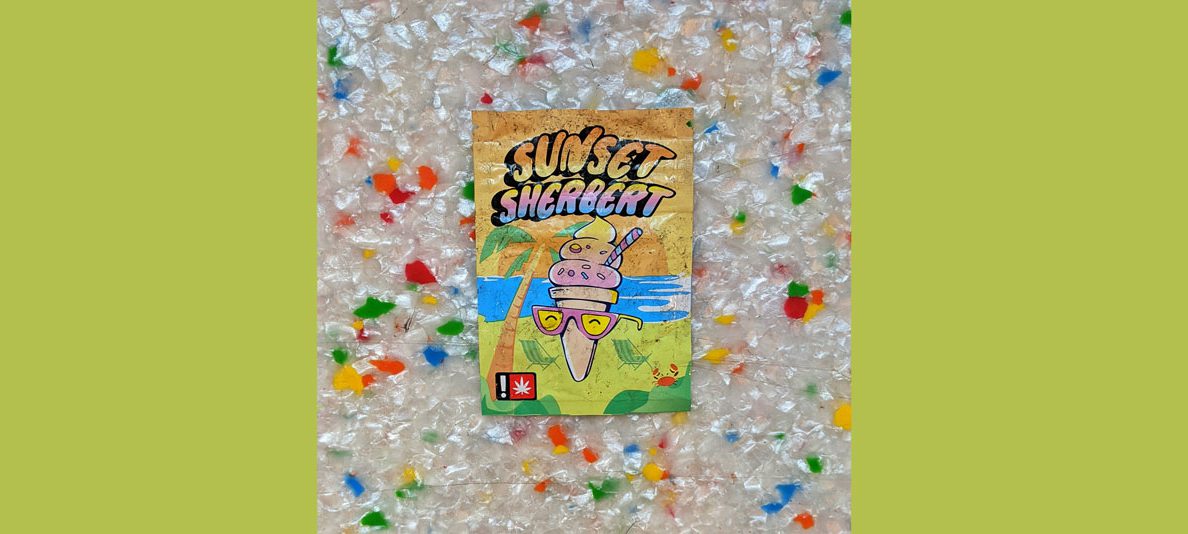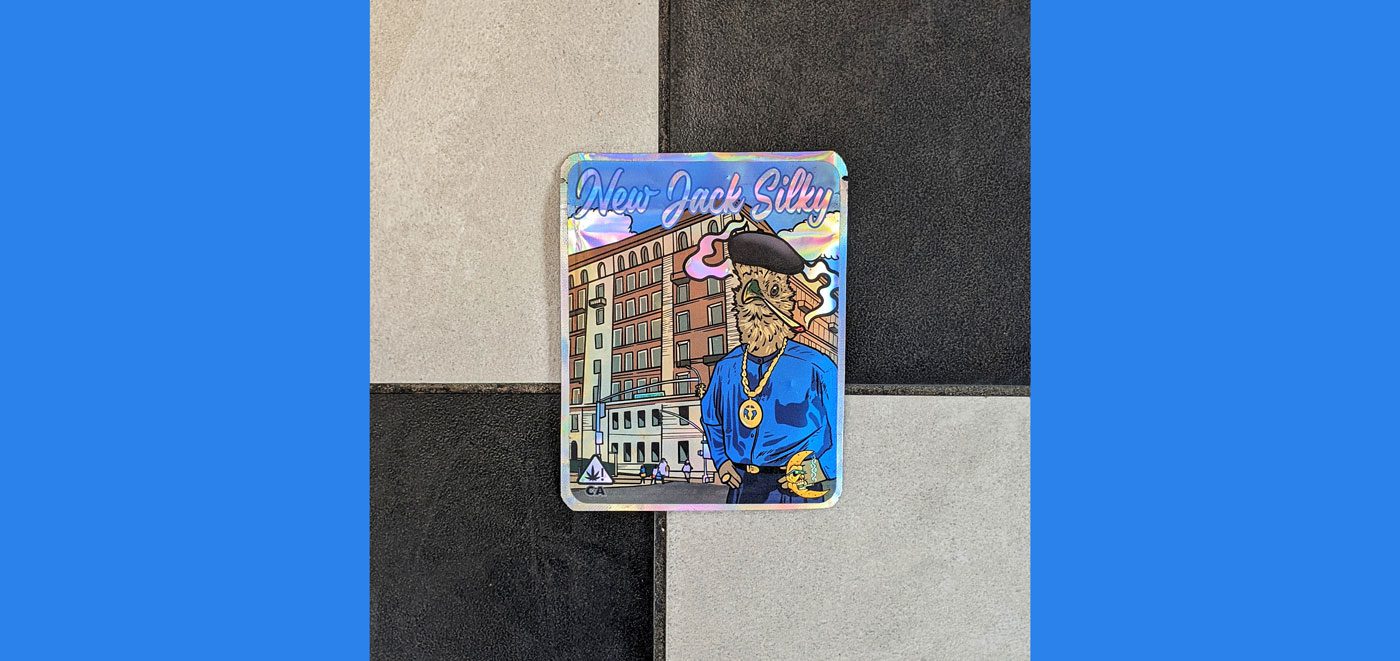There are many ways in which cannabis aficionados have found to make weed-related art. But the two artists known as Highley Varlet — Jessi Highet and Mike Varley — found a unique way to incorporate photography, digital art and NFTs, Covid-inspired marathon walks, and a unique time in the legalization of cannabis in the state of New York. “Weed Bags of New York” is a digital art project by Highley Varlet featuring found weed bags. On their website, weedbags.nyc/bags, the duo calls this Series Two of “Post Clarity,” a five part NFT docu-series cataloging the weed bags they found while walking 7,000 miles around the five boroughs of New York state. The couple walked the distance of five marathons a week throughout the city for a full year. At a certain point, discarded weed bags kept popping up as a theme, so the couple kept the most interesting ones. Later, the couple took the bags to famous and non-famous sites around New York and photographed them. The photographs were then turned into an NFT collection. I spoke with Mike Varley to find out more.
What is your connection to cannabis?
It definitely helps me creatively think of other things, it gets me to a different place, and I use it socially. ever asked me about it, or, you know, like, it’s just kind of a thing that, you know, at most, I considered it a tool to help me get to different places creatively and understand the world. It’s been interesting that since I’ve been doing this project, and people find out about it, sometimes they get very anxious like I’m going to recruit them to smoke a lot of weed. I’ve never made cannabis a front and center part of anything I’ve made but I’ve never shied away from it either.
Tell me about the walks you and Jessi did.
Since Jessi and I got married we have been doing these vacation walks for three years in a row. The first year we walked from San Diego to Los Angeles. The second year we walked the length of Vermont. And the third year, we walked from the Pacific Ocean to Olympia, Washington. And at the conclusion of the or during that third walk, I pitched to Jessi that we do this project, which was to walk five marathons a week for one calendar year. And she was like, “No, you’re crazy. I’m not going to do that!” But ultimately she walked three days a week, and then ran her textile fabrication business. I walked the full five days, and there was kind of a minimum viable product where one of us would walk at a minimum in case one of us got sick or hurt. When we planned it, there was no anticipation of Covid. I put my two weeks notice in February 2020. And then March 13, 2020, everybody was packing up at work and they never went back to that office.
The timing just worked out then?
At first the Covid closures were very disheartening, because we were fully ready to start on March 21. We made a grim joke before the project started that there were only three things that could stop us like nuclear war, a land invasion, and a pandemic. But we were joking! We didn’t conceive that it was something that even could happen. So we went into three months of hard lockdown, just like the rest of the city did. And then when, like, honestly, like the public bathrooms started opening up again, we could actually begin our endeavor. It was a wonderful thing to do, to be able to document the city at that particular time, but also just mentally to be able to be outside and to physically be active.
There’s a lot of trash in New York. Why did these bags stand out to you?
They stood out for a couple of reasons that evolved as it went. First, they’re everywhere. They’re very colorful. And about 40 to 50% of them are intellectual property infringement. They have characters like the Simpsons, Rick and Morty, or Dragonball Z, different Marvel characters, things like that. I find it fascinating because it’s packaging and it’s marketing, but if you imagine that a craft brewery, for instance, using a copyrighted character they’d be suited to oblivion. Cannabis legalization was kind of murky in New York City and in many parts of the country. I guess the thought process must have been like, well, this is already something that’s not legal so what does it matter if you show Bart Simpson in a smoking jacket, lighting a blunt with $1 bill. So I just started picking up the bags that were interesting to me. And then with weed being legalized and as it becomes progressively more legal, the conversation is going to be changing about IP and branding. So it might be that this is a very particular snapshot in time for what these types of containers look like.
So presumably they won’t be allowed to use these images anymore.
Yeah, they’re not allowed to now. I talked with some IP lawyers and whatnot because I didn’t want to be slapped with some sort of IP infringement thing myself. Most people that I talked to believe that it extended to the bounds of fair use, because not only was I not using any of these bags as cartoon characters in a show, or something similar, but it was also the context of them being collected while I was on a walk. So it’s kind of two or three steps beyond the fact that I didn’t even make the bag.
How many images did you create?
There are 220 bags in the collection and in addition to that, there are three artists’ commissions that I gave out to people that purchased them. There were three artists who I admire and I asked them to do renditions of the bags so those are in the collection as well.
Did you go into this thinking that you would document what you found on the walks or was that separate from the art project?
I meticulously keep track of whatever I’m doing. So I had a strong sense of doing some sort of documentation, but I didn’t know what it was going to be until they started emerging while I was on the walks.
You plan this to be a series?
This is series two of five NFT series that I want to do. The first was “Everything is Everything,” which was a bagel review site I made. I started documenting bagels because I got them on my walks, because they’re fast and cheap. I rated over 200 bagel stores in New York City. As far as I know, the bagel project was the first instance of NFTs as reviews. So that’s kind of compelling because the future of reviews might be that instead of giving your review to Yelp or Google and getting nothing out of it, you create a little subjective universe of, you know, the best ramen in San Francisco. And then if people like what you’re doing they can support it by purchasing an annuity. [Editor’s Note: At everythingiseverything.nyc, collectors can mint NFTs of the bagels Varley reviewed.]
You chose the backgrounds for the bags intentionally. Can you tell me a little about how you picked them and how they go with the bags?
There are good reasons why I picked the backgrounds and how many I picked. The number of pictures I took at each location was based on this dominance theme within NFT’s of rarity and the idea that you can kind of manufacture rarity based on the decisions that you’re making as the documenter, right? I took 10 pictures of 10 weed bags on Coney Island. At the John Lennon Imagine mosaic in Central Park, I took three bags and I took three pictures. I bought tickets to a basketball game at Madison Square Garden and got on the front row and convinced the security guard to let me on the court real quick to take a couple pictures of a bag. They were laughing while I was doing it. But then I went to take another picture and they were like, “No, no. You’re done.”
What’s the process of creating an NFT?
The biggest site that does it is called OpenSea. You upload certain file types and they pay the cost to manufacture the NFT. It’s called a gas fee and it’s like a transaction fee essentially to put that data on to the blockchain. If you sell the NFT, they’ll take a cut of it. Another tier lets you pay the gas fee without losing a percentage if you sell. With this project, I recruited the help of somebody that can actually write the contract. They program the contract that puts it on the blockchain. When there’s a transaction, the contract spits out a token that goes to their wallet that is signified by the blockchain to be permanently theirs. People joke and say, I could right click and save any NFT. But that would be like saying you own the Mona Lisa when all you have is a notebook with the Mona Lisa on the cover. No. There is definitively a version of the Mona Lisa that exists and you can’t own it. With an NFT, you can definitively own the original image. [Check out opensea.io]






